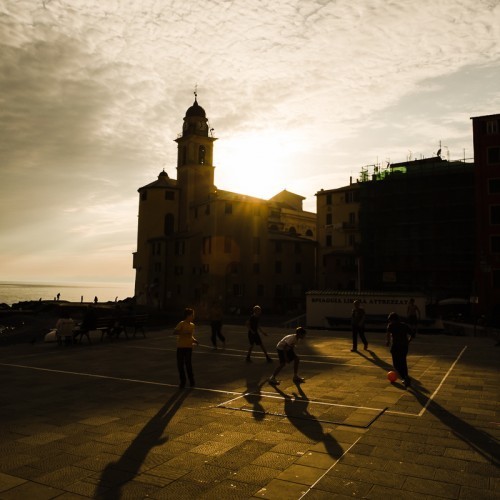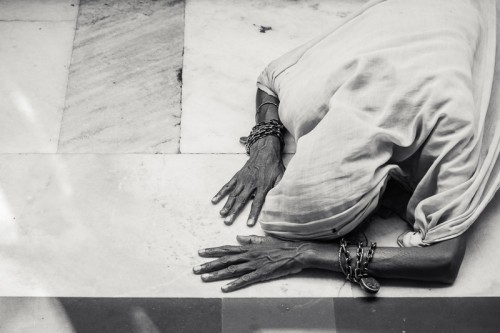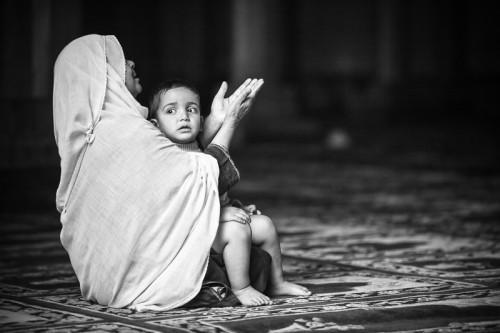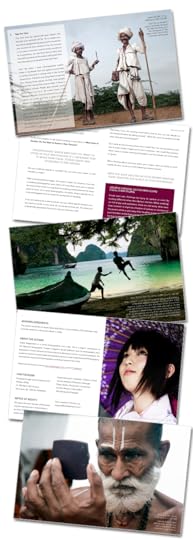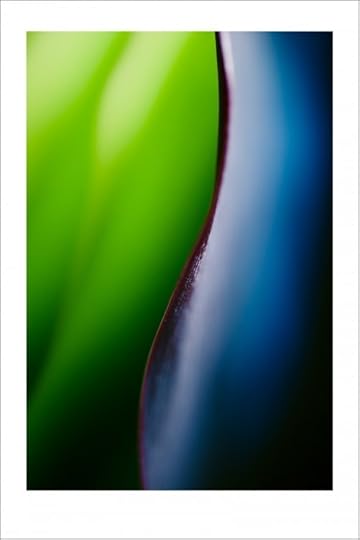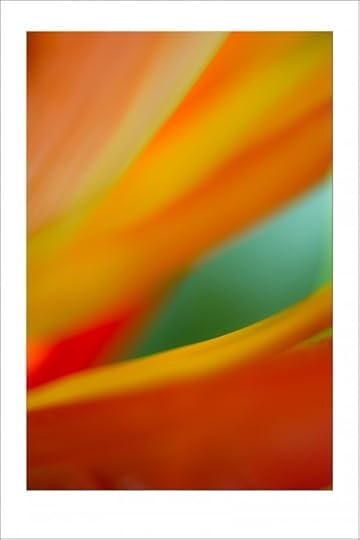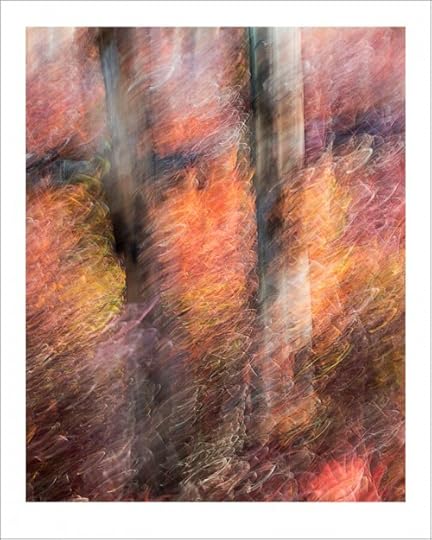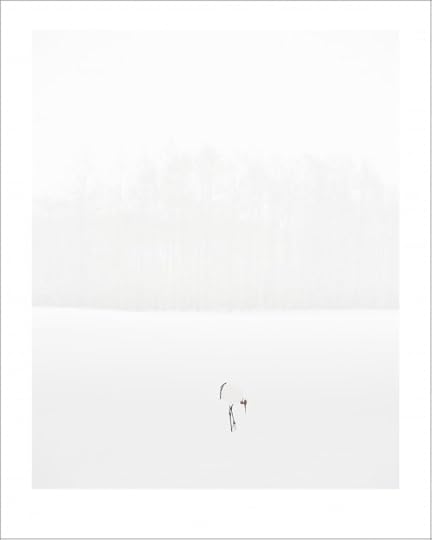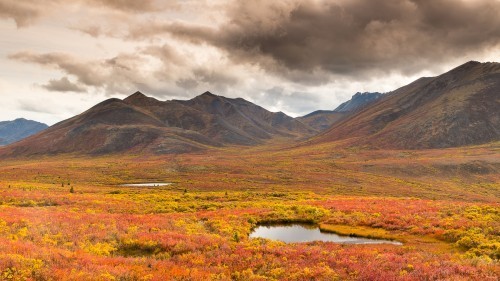David duChemin's Blog, page 32
October 22, 2013
Follow Your Passion?
As trendy as it has been recently for people to write about doing things fueled by our passion, it looks like we’ve now swung the other way, fatigued, I suspect, by all this talk of passion, which like any hot-burning fire, takes constant fuel to feed it. No wonder we’re tiring of the word “passion”. But it would be a mistake to go too far the other way. Lately I see more and more posts on Twitter and Facebook putting down shoot-from-the-heart photography and photographers who “follow their bliss.” I worry because we tend to be so polar, and the moment we make that swing back away from passion, we’ll miss the middle, and return to the other extreme – photographs and lives lived according to rules and the tyranny of technique. Why does it always have to be one way OR the other?
And then this morning I was pointed to an article by Scott Adams, the creator of the Dilbert comic, which had some solid things to say about learning from failure. But like so many articles these days, weary from the calls to “follow your passion,” he dismisses that call to do what you love as bad business advice. And if Follow Your Passion were the only advice you ever got, it probably would be. But I still think he’s wrong in writing-off a life – even in business – that begins with passion. I believe he’s wrong because he’s forgetting that what we do, why we do it, and how we do it are different things. He’s forgetting you can live passionately, do business passionately, do art – with all the passion or love or enthusiasm you can muster – and still do it with excellence, wisdom, acumen, and hard work. You can make photographs with passion and still not neglect your craft.
“What we do, why we do it, and how we do it are different things.”
The question that never seems to get asked is: What do you want to do with your brief life? If that something is to build a profitable business and make an unfathomable amount of money, then Follow Your Passion might be the wrong mantra. But then I’d argue that you’ve just identified your passion – money – and now the question is, How do you do that? If what you want to do with your life is build a sustainable business that works around the thing you most love, then Follow Your Passion is great advice, so long as you understand the words “build a sustainable business” and you work your ass off to do so. Passion is not a magic wand. It’s a reason for learning from your mistakes and persevering, not a substitute for it. Whether you do what you do to make great money or make great art – passion is a fuel that’s hard to beat. What you allow that fuel to power is up to you.
Having this discussion at all, without first asking yourself what you want, and what you are prepared to do to get what you want, is pointless. In fact, maybe the discussion itself is pointless because it results in a lot of talk and not much action. The word Passion gets used a lot these days, so much so that it’s losing it’s meaning. Use whatever word you want. Our choice of words isn’t the point. What is very much the point is this: How do you want to spend the few -and they will seem both few and short – days of your life? The scarcer something is, the more valuable it is, and our days are not only limited, we don’t have a clue how many we’ve got on the books. Dismiss this talk of “passion” as childish, and do what’s sensible, but it won’t lengthen your days or add meaning to them.
How do you make a life that allows you to do what you love? That’s a completely different question. For some it means a business of your own. For others it means a job you also enjoy, one that keeps you free of the concerns of running a business and focused in your free time to do what you want to do. For most of us it means – and this is where Scott Adams hits the nail on the head so well – failing a few times, maybe many times, as we discover our own road. And for some those falling down times are dark, and long. But if you know deep down that you’ll never be happy unless you try, then what’s the point of doing anything but?
“I still believe the only road worth walking is one that you’re passionate about.”
What “Do what you love” and “Follow your passion” does not mean is an easy road. If anything it means a harder one at times. It does not mean less hard work, it probably means more. But it’s meaningful work. Work that, on balance, gives us more energy than it takes from us. Work that feeds our souls, or whatever you call the deepest part of you. Work we look back on in later years as a road well-taken, one that gave us joy. However you do that, I still believe the only road worth walking is one that you’re passionate about, the one you’re so deep-down in love with that you’ll walk until your shoes fall off and your feet begin to bleed. Whatever that means to you.
So make art, make a business, build a family, a house, or a relationship, but God help you if you don’t do if for love. Sometimes it won’t feel that way, but if it’s not fueled by love, find something else. Call it whatever you like. I’m OK with passion.
October 18, 2013
On Authenticity, Again.
Yesterday I wrote an article about authenticity. This is part two.
Photography can be a lens through which we look at the world, and in that world find wonder and experiences we might never have without the camera. But sometimes it’s a little too easy to see our own reflection in the viewfinder. And from there a little too easy to compare ourselves with others. It’s a short step from creating something beautiful, or honest, to looking around to make sure others have seen not just our photographs, but have seen us, the maker. “Look at that!” becomes “look at me” pretty quickly. Twitter and Facebook make it easier than ever to feed the ego.
It’s a brutally tough balance to find, especially when there are so many voices clamouring for attention, a chorus to which we feel we must inevitably add our own. But some days it feels like it’s a chorus of voices all trying to out-sing the other and it’s exhausting. And it’s worse when we hope those voices are saying things about us. And we keep checking in to see if they have.
I wonder if listening to such a glut of voices doesn’t rob us of the space to listen to our own. I know I’m having a tough time finding a signal in all the noise. I’m distracted. I feel like my job has become more about “being a (well known) photographer” than making photographs. I love you all, and I care about you, but checking Facebook to see if you like my blog, my photograph, my clever little whatever, it’s exhausting and it’s killing my muse. It’s not about you. It’s about ego.
Julie Neidlinger said it well when she wrote, “I can’t be authentic, be original, be all these “true to yourself” kinds of existences if I care what you are thinking.”
Remember when every frame was golden and filled with wonder? Remember being so in love with the strange, beautiful alchemy of this craft that we weren’t looking for atta-boys or Facebook likes? When our joy came from the creation, not the feedback? Remember how that joy led to curious, creative play, and the way the hours would pass while we were on our knees with a camera in the grass, or watching images come alive in the darkroom? Remember when the name on our gear didn’t matter because it was just all so mind-blowingly magical and we didn’t care what others thought about us? I do.
I want to go back to that. I want the first book I open in the morning, with my coffee, to be a book of photographs, page after page of the amazing work created by friends and mentors, past and present, not Facebook. I want the magic back. I want to look around at the photography world and be filled again with respect and awe, not fear that we’re all, myself included, sliding unnoticed into mediocrity, because we’re more worried about our image than about our images. I can’t be the only one.
Learning to be a photographer is learning to see. It’s about receptivity. Perception. An openness to the world around us. Wonder. Curiosity. And yes, the growing ability to wield these clumsy black boxes to turn the light into an image. My biggest obstacle these days is not my lack of craft, or the need for better gear. It’s the noise from without and the noise from within. It’s distraction. It’s ego. Authenticity struggles and dies kicking for breath when we choke it by listening more to the voices of others than to our muse, our own imagination and voice.
October 17, 2013
On Authenticity
It’s been a while since I wrote about vision and voice in the life of the photographer. Recent conversations have pulled me back into those old discussions we used to have here on this blog. One of those recent conversations was with someone wrestling with the idea of authenticity. Was her voice authentic? And how much mucking around with new techniques could her work handle before it was no longer so? If this were a friend who lived here I’d take her for a much needed stiff drink and we’d talk. She doesn’t. So we can’t. So if you’re listening in, pour yourself a whisky, or a cup of tea (but make it stiff).
Voice is the way we express our vision, or our intent. Authenticity in voice – or use the word integrity if you prefer – is about one thing: honesty. Is it you? Tough question, I know. Who we are is always changing. And that’s the thing about both vision and voice: they change. They evolve. Because we change and evolve. It’s why I call bullshit on the idea of chasing a style. Style is a legitimate by-product of finding your evolving voice. Authenticity is doing that in ways that most stir your imagination, doing it your way because it pleases you and feels right. Make style the point of it all and you might find it just in time to find you’ve moved on.
There are a couple important words in that last paragraph, but I think the most important one concerns evolution. Life happens, we change. Martin Luther once said that this life is not about being but becoming. It’s splitting hairs, I know, but it’s helpful to remember that we are growing into ourselves as humans, and artists. I used to snicker when artists said their work was an exploration of this or that. But now I get it. All our work is an exploration. And exploration changes us. It opens our eyes, changes our minds, makes us think new thoughts. I am not the person I was. My vision changes. And then, necessarily, so does my voice.
Imagine a writer. The stories he writes in his childhood will be about different struggles than in his teens, young adulthood, and the late years of his life. So too will the words change. He may, in his thirties, switch for a while to poetry. A different voice, to be sure, but not necessarily less authentic. In fact he could discover in poetry his most authentic voice because it allows him to say things in ways he never could in his novels. Any of my favourite writers, like the characters in their stories, change with the arc of their lives, So too does their voice. But the best of them, the ones that resonate, remain authentic. Genuine. To be authentic is not to be homogenous.
“It’s as easy to be inauthentic by not keeping up with who you are, as it to be so by copying others.”
Chasing authenticity is like chasing originality. Spend too much time doing it and you’ll lose site of the thing you were aiming for. Explore. Play. Follow your gut. You’ll know when it’s you and when it’s not. But don’t mistake the goal. The goal is to make work that is consistent with who you are and are becoming, not who you once were. Repetition is not the same thing as consistency. It’s as easy to be inauthentic by not keeping up with who you are, as it to be so by copying others. And, by the way, copying others is OK, even necessary, as we learn, but not so helpful when it comes to making our art. You just have to know the difference. Learn to write like Hemingway. But when you write your novel, adapt what you learn to who you are, not the other way around. Learn to play guitar like Bruce Cockburn, but then write and play your own songs, which will be better for what you’ve learned.
In the end it comes down to your gut. You conscience. Whatever. That inner you that knows you best. I wish I could give you three steps to guarantee authenticity in your work, but that’s like telling you I can teach you to be honest. Look at your best work: is it consistent? It’ll change, for sure, and this year’s work won’t be like work you did 5 years ago. But does it look like it came from the same person, or is it all over the map? Do you see yourself in that work? Do close friends see you in that work? Do you love making it? Does it feel right? That’s probably as good a sign as any.
Oh, and one last thing: don’t think for a moment that this stuff gets any easier. Most of us still worry we’re repeating ourselves, worry we might be creating the mediocrity we criticize, or that we’ve moved past old ways of expression only to find our work less authentic that it once was, less alive. And then you play catch up. Don’t let it paralyze you, or steal your joy. We’re making beauty and telling stories, we’re not saving the world.
October 14, 2013
New eBook – The Visual Storyteller
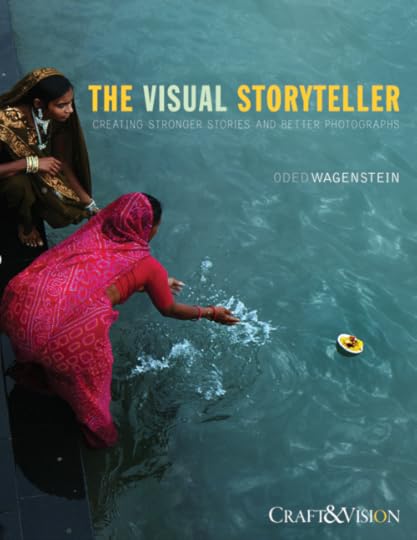
Some of the most powerful photographs tell—or imply—a story. Of course, not all of them do, but the ones that do seem to engage us in ways others don’t. Capturing a sense of story in our photographs isn’t easy, but it’s a good way to make our photographs stronger. Oded Wagenstein is a young Israeli photographer with a surprising number of publishing credits to his name already, and is a regular in National Geographic Traveler (the Israeli edition). The Visual Storyteller is his first eBook and it’s an excellent introduction to incorporating story into our photographs. I say it’s an introduction because storytelling is a really rich subject and Oded’s book was written as a primer for anyone wanting to either wrap their brains around this topic, or to begin selling their work to editorial markets, which is where Oded makes his bread and butter.
Beautifully laid out, The Visual Storyteller takes you from a discussion about what makes a good story-telling photograph, and the basic elements of storytelling, to how we incorporate that knowledge into our work. He goes on to discuss gear, light, composition, approaching people, and how to get your photographs published, including an interview with a National Geographic Editor-in-Chief. Beginners and intermediate photographers who travel with their cameras, or have an interest in pursuing work as travel photographers, will find value in this beautiful 78-page eBook.
The Visual Storyteller, by Oded Wagenstein is a downloadable PDF ebook published by Craft & Vision. For the next week it’s available for just $4 (discount codes below).
Use the promotional discount code STORY4 when you check out and pay only $4 OR use the code STORY20 to get 20% off when you buy 5+ Craft & Vision products. These codes expire at 11:59 PM (PST) October 21, 2013.
October 9, 2013
Toward Mastery
I’m uncomfortable with the notion of mastery. It’s not that I don’t believe we can’t, in some broad way, master a craft – gain a level of comfort and expertise that the tools become an extension of ourselves and we wield them purely through muscle memory. I do. In fact if it’s that comfort that’s an indicator of our approach to mastery, then it’s only after 25 years that I now feel suggestions of that comfort in my own process.
I have a guitar in my loft. Once in a while I pick it up and play a disastrous and abbreviated version of Dust in the Wind. But I will never master it. Maybe I could. But I won’t. Because I’m not willing to put the time in. And that, above all, is what takes us – if we’re ever to get there – towards mastery. The time. Time to hold the camera in our hands for the 10,000 hours I keep hearing is required. Time to look at the resulting photographs and study them. Time to make really, truly, undeniably bad photographs, and learn from the mistakes. Time to make surprisingly beautiful ones and enjoy the delight of holding that print in our hands.
Maybe it’s not the notion of mastery I’m bothered by, but the focus on it. And perhaps, like many other things, I think it’s just the wrong goal. Mastery is a by-product of doing the thing we love, with growing skill, over a period (usually a long one. No, a whole year doesn’t count). It is the result of what we aim for, not the thing itself, and I think it’s an important difference because mastery gained from years of making photographs for the love of it will produce something very different from mastery gained simply from chasing mastery: heart. The pulse of an artist’s passion. The salt of tears and sweat. The photographs resulting from the one will be technically perfect, and perfectly forgettable; the photographs from the other will be human, resonant, beautiful. Unforgettable, even if imperfect. Perfection is over-rated, and not to be confused with mastery.
Mastery will not be gained, though it can be helped along, by reading books or listening to podcasts. It will not be found in the latest review of the latest camera, nor in that camera itself. It will be found somewhere after you put all that time in, all those many hours. Glamorous? I should think not, no. Pretty mundane at times, in fact. Which is why the Search for the Magic Wand takes up so much of our time. Why else do we spend so much time, and flood the internet 140 characters at a time, on every new piece of gear? I’ve got a camera. I’d be better off getting back to it. It’s sitting on my tripod in front of a vase of flowers, and nothing but closing Facebook and getting back to making photographs is going to help me learn my craft. Stuck in this foot cast and unable to go anywhere without crutches I’ve decided to focus on abstractions of colour and line right here at my kitchen table, to work towards the next 10,000 hours that anyone who finishes the first ten thousand not only knows is needed, but longs for. But I don’t do it because I need to, I do it because mastery, if I ever got there, would be arrived at quietly, and would satisfy me no more than any of the other landmarks I’ve arrived at along the way. I do it because I love making photographs themselves. They are the point.
Without bad-mouthing books and workshops, from which I make part of my living, I need to say this: most photographers these days have already read a lifetime’s worth of books and some of us have already taken too many workshops. If you’ve read the books and taken the workshops and you still feel no closer, then consider two things. Thing One: the closer you get to a mountain the larger it feels. Your intimidation may in fact be a sign that you’re closer than you thought. Thing Two: it could be that the books and workshops have become a crutch. They’re your safe place, and we don’t learn in those safe places. We learn when we step out from them, fall down, and get up again. Take what you’ve already learned in your head and step away from those teachers for a while – a year, even – to work it out and work it in. Mastery comes through the hands, not the head.
Your gear, for now, is good enough. You don’t need a better camera. You need to go make photographs. Don’t worry about mastery – it’ll come one day. You’ll wake up and find yourself more comfortable than you ever imagined. For now it’s enough that you fall in love with the photograph, and go make more of them. A million times better that someone be amazed at your photographs than at your technical prowess. Even more important that you love what you do than that you obsess about how you do it. If, one day, someone calls you a master, you’ll be too busy making photographs to take much notice.
October 7, 2013
Awake Enough.
I was talking to a photographer recently who said something I’ve heard, in so many different words, from so many of us, including myself. She’s taking a trip, going somewhere epic, somewhere she’s obviously been dreaming about, a place that’s already well lodged into her heart and imagination even though she’s never been there. She said she was worried it would be so amazing that she’d never be able to capture it. She’s worried she isn’t good enough yet.
And she isn’t. None of us are. She’s going to a place that will blow her mind: to Antarctica for the first time. She’s already thinking about deep water, impossible blues, and a vastness she’s never imagined. But this isn’t about Antarctica. We all have places we go, people we meet, experiences we have that are bigger than any camera can capture. Full of colour and emotion and the frisson of being alive. We’d be insane to think we could capture all this. The best we can do is interpret it, borrow a piece of it and set it aside against the day we begin to forget. And we can’t do that, can never come close, when we’re focusing on how good we are, or aren’t, or how good, or new, our camera is. We do that when we put those worries somewhere else and live the moments. It’s not about being good enough – though craft matters, it’s too late in the moment to do much about our shortcomings – it’s about being alive enough. Awake enough. Willing enough to risk, to play, to stop looking so damn hard for what we expect and instead open ourselves to the surprises around the corner and the moments unexpected.
And in those moments when we think ourselves good enough, what a shame if the moments aren’t bigger than that; how sad that the memories are so small that they fit completely within these little frames. Surely life is bigger than that.
I think the best thing my camera offers is not a record of this experience or that, but a way of opening the door to a bigger experience of this or that, and a chance to make something that in some small way expresses my wonder, joy, curiosity, and gives me slivers of memory enough to conjur them back.
Study your craft, then let it get out of the way. More important, I think, that you breathe life as deeply as you’re able, making the odd beautiful photograph along the way, than that you walk through life so burdened by gear and expectation that you miss the wonder and the beauty your camera can only imperfectly see.
October 4, 2013
Stirring the Paint
It’s been a long time since I did one of these posts, but aside from a biography about Vincent Van Gogh that’s as entertaining as it is depressing, I’ve got very little on the go right now. I’m just past my 4th week in a cast and on crutches (catch up with that story here), and going a little stir-crazy. I’m trying to make good use of my time, planning projects into 2015 and learning about Polaroid emulsion lifts, but we all have ups and downs in our creative process and this is one of those lulls.
I want to point you to a couple sources of inspiration, places I’ve gone recently to stir the paint and dream of being out there making photographs.
Faded + Blurred, a place I wander when I’ve got a few minutes to stir the paint by something beautiful or interesting. They do a great job of curating that site, and the podcasts and articles are full of intelligent stuff. Highly recommended.
Plastic Pacific, by Kim Preston – an astonishing, and eerily beautiful, exploration of our polluted oceans, specifically plastics in the pacific. If you think you can’t do that next personal project on a budget, and still create something amazing, this should make you think again.
Moksgm’ol, The Spirit Bear, by my friend Jon McCormack. Jon had a beautiful encounter with a Kermode bear, or Spirit Bear, while recently exploring British Columbia’s Great Bear Rainforest. See his photographs here.
Kalle Gustafsson. Simple. Beautiful. Not my kind of work, but my kind of light and elegance.
Sergey Gorshkov. Featured recently in National Geographic, his work from Wrangel Island in Russia’s arctic, is stunning.
We posted this over on Craft & Vision’s social media stream, and it’s made the rounds, National Geographic being what it is, but if you’ve not seen this video, it’s worth 6 minutes of your time. The Photographers on Photography
Lastly, if you didn’t see it, we released The Created Image earlier this week. If you wanted to come to the Created Image weekend this year but couldn’t, it’s now available at Craft & Vision, and if you act before the end of October 07, there’s a steep $30 discount and a chance to win a $500 B&H Gift Card. The Created Image was an inspiring weekend and the impact was amazing. 10 sessions, filmed in HD and available in 14 hours of streaming and downloadable content. Don’t be confused by the Volume 1 designation, we did that so it wouldn’t be confused with next year’s conference or resulting videos. 14 hours of teaching on topics like creativity, composition and visual language, editing, post-production, and more. Only $50 until the end of October 07, if you use the discount code. That code, and more information here.
September 30, 2013
The Created Image Video Series, Vol 1.

When we decided to host an intimate, intensive weekend conference in Vancouver this summer, I was blown away by what an incredible experience it was. We spent two days together, and we all left exhausted, inspired, and changed. In all there were 10 sessions, and once we cut them and edited them together we had just over 14 hours of video content for anyone that couldn’t come to an event like this. It was a small group of us, about 30 students, and myself, but now you can get in on the sessions that formed The Created Image Workshop in Vancouver this summer. Today we’re releasing The Created Image Video Series, Volume 01. And if you pick it up now, before the end of October 07, 2013, you’ll get a killer deal and a chance to win a $500 gift certificate from B&H Photo in NYC.
The Created Image is 10 separate sessions:
The Inspired Eye 1 and 2, about the creative process and the foundations of what we do as photographers and creatives.
The Created Image 1 and 2, about visual design and composition, discussing things like balance, tension, scale, and all the other visual design tools we often ignore in favour of the so-called Rule of Thirds.
Photographically Speaking, a session about how we use the tools of visual design to express and communicate.
The Un-Suck Filter, a session about gimmick-free creation of stronger, more compelling images.
The Path to Pro 1 and 2, a tag team between my manager, best friend, and author of Living The Dream , Corwin Hiebert, and myself, about the realities of becoming, and being a working professional.
This is the next best thing to being there, which you can’t, because it’s over and while we’ll do another weekend next summer, the teachers and the curriculum will be completely different. But with both streaming and download options, all 14 hours of the content can be yours when, and where, you want it. (Note: Volume 01 is the whole set of 10. It’s so-named because we intend to do this next year, which’ll be Vol.02)
We asked our participants for honest feedback at the end, here’s what some of them said:
“I’ve taken 5 live photography education courses this year and…David is probably the best it could get in terms of learning. One of the best learning sessions I’ve attended in my career.” – Ranjit Vazhapilly
“David is an excellent instructor and his creativity focus is fantastic. By far one of the better photographic workshops.” – Paul Ausmann
“David opened my eyes to new ways of thinking and has sparked my desire to pursue my passion at another level. I’m already making better photographs! I would highly recommend the experience, regardless of your photography skills or training.” – Mark Parsons
“Very liberating! Very affirmative! Thank you, David.” – Gretchen Taylor
“This conference was exactly what I needed it to be—an inspirational kick in the ass. I left feeling motivated to hold myself to a higher artistic standard. Even better, I left with a set of practical tips, tools, and concepts that I can use in my efforts to elevate my work.” – Shanna Baker
If you’re looking to take your photography past the basics,or want a great companion to The Visual ToolBox, and you want to spend 14 hours with a teacher who’s passionate about making the best photographs of his life, and teaching others to reach for the same thing, this is the closest thing we’ve offered to a one-on-one in your own living room. Or bus seat. Or lunch room. It’s professionally shot in full HD, and the audio’s great. Most importantly, it’s an honest, passionate, gimmick-free approach to this craft.
For one week only you can get the entire bundle for only $50. That’s $30 off the regular price of $80. And everyone who buys a copy of this video series, before the end of October 07, 2013, will be entered to win a $500 gift certificate from our friends at B&H Photo in New York.
Use the promotional code CREATED30 when you check out and pay only USD $50 OR use the code CREATED20 to get 20% off when you buy 5+ Craft & Vision products. These codes expire at 11:59 PM (PST) October 7, 2013.
September 23, 2013
Automatic Art, A Rant.
A year ago I walked by a place that does framing here in Vancouver. The sign in the window said something like, “Get it framed! Turn your photos into art!” I pulled out my iPhone and made a quick photograph, shook my head and walked on. I only just remembered this because yesterday a banner ad online said something that got me shaking my head again: “FotoSketcher is a 100% free program which can help you convert your digital photos into art, automatically.” Never mind the absurdity of a product that’s 100% free, saving us from more expensive products that are, what, only a little bit free? The idea of automatic art, art that’s easy, makes me numb, as does the assumption that my work is not art until I’ve run it through a software program that will “improve” it.
It’s odd how people wrestle with the idea of art. There’s this prevalent notion that art is hard to define, as though we’re talking about some obscure theological matter none of us can quite put our fingers on. But with the exception of the eternal question about whether TV wrestling is a sport, we don’t really have the same difficulty of definition when it comes to athletics. You may think trampolining is silly, but it’s athletic. There are sports you enjoy, and some you don’t. But a dislike for rugby on your part doesn’t make it any less a sport. When it comes to art, we feel we need to say it is or is not art, rather than say: It’s art and it just doesn’t work for me. We have the same problem when it comes to saying we are, or are not, artists. Athletes are athletes. It doesn’t mean they’re Olympians, or even remotely good at what they do.
We have deified art, (perhaps I should say, Art). We’ve turned it into a God. I suspect the Art World (capital A, capital W) wants it this way. The high priests of culture do better when the language of art is ancient and impenetrable, when it’s shrouded in mystery. But it isn’t. If we called our unique forms of expression through craft something other than Art, would that resonate less with the human heart? Do we need to define the word “music” for it to quicken our pulse, move us, to tears or dance? You can say rap isn’t music, or poetry isn’t literature, but it doesn’t change its impact among those for whom it’s a moving experience. You can call dance anything you like, it doesn’t make it less beautiful or thought-provoking. But make it all a matter of definition and, not only have we missed the point, but we’ve done what some theologians have done for millenia, so lost in arguing about how many angels can fit on the head of a pin that we never arrive at the point. Worse, we put so many words in the way that we block the way for others, forbidding them access, making them feel so stupid or unworthy that they stop trying to have an experience of that beautiful thing that is our birthright.
Oh, I’m not an artist…
Why? Why aren’t you an artist?
Not to perpetuate a cliche, but every 4 year-old I’ve ever met is an artist. They make stuff with all the talent and heart that they have, and you can argue with them until you’re blue in the face, you’ll not convince them they aren’t artists and their work isn’t art. And on some level we know this because it’s how we react when we see art we don’t like or understand. “My 4-year old could do that!” That’s right. And she does. Do we really believe a 4 year old can’t make art? Have you ever heard a 4 year old sing, or dance, and been moved by the expression? How hard would our hearts have to be to say it’s not art?
The furor caused when painters like Claude Monet and his colleagues formed what became known derisively as the “impressionist” movement was almost violent. It’s not art, the Salon cried! And so caught up were they in defending what art should be like, in defining what art is and is not, that they missed the chance to experience the wonder. I’m pretty sure they weren’t making their own art while they were so busy arguing.
You don’t have to understand it to allow it to be art. You don’t have to like it. You don’t have to be comfortable with it. It doesn’t have to be new, good, or even important. And you don’t have to be able to define it. I don’t have the same problem defining art, because I don’t try. It’s the wrong question. And you don’t have to call your poetry, photographs, painting, dance, or gardening art (though it is if you put something of yourself into it), for me to be deeply touched by it, for me to learn from it, and for me to see a piece of you therein.
And that’s why I cringe when I see promises that our photographs can be turned into art. Because if it’s not art when I pour my heart into it, it sure as hell doesn’t become art when it’s framed. And worse is the promise that it can be made art through an automatic process. We can argue all day long about what Art is, but if it’s not deeply human, I’m not interested. Art, if nothing else, is both a gift given and a gift received. As a gift given it’s a means of expressing ourselves, giving some piece of ourselves to the world. As a gift received it’s about experiencing otherness, something beyond ourselves. Sometimes we don’t know to whom we’re giving the gift, sometimes we receive it from unexpected sources. But at the core of it, it’s about humanity, not definitions or labels. It is not remotely important to me that we define art; it is supremely important that we experience it. We will never experience it when it comes so easily as at the push of a button or the fitting of a frame, without the struggle or the joy with which art has been made for millennia.
September 20, 2013
The Gift
The gift of photography is that it teaches us to truly see. This is as true of the photographer with the camera to his eye as it is to the person who experiences the photographs. The camera, subject to so many more limitations than the human eye, the limitations of the frame especially, excels because of those limitations, not despite them. Photography is the art of exclusion, made so by the fact that it forces us to place what matters inside a frame, excluding all else. It’s a story-telling device of extraordinary elegance and simplicity. And by this act of exclusion we point more powerfully to the things within the frame, saying without words, because they aren’t needed when the photograph is clear, Look at this! With so much going on in the world of our periphery, it’s the photographer who picks one detail and elevates it from the unobserved and mundane and points out the line, the light, or the moment that would otherwise have passed without our notice.
Photography is not merely about what we see, but how we see it. The often repeated nonsense about the camera never lying is, of course, just that. Nonsense. The camera is a storytelling device that will tell any truth or lie we ask of it. Or have we forgotten that it is cameras, and many of them, that capture the raw materials for the thousands of movies created every year, and the hundreds of thousands of ad campaigns that choke the once-beautiful print media that’s now in such decline, not to mention the propaganda films of every conceivable dogma? The camera is far from objective, and I say this in praise of the camera, not to slander it. How many of us really want our stories told to us with just the facts, whatever those are, without feeling or reaction? The price of this so-called objectivity is a loss of humanity. How much would I love to watch news anchors who actually, forgive my crassness, gave a damn – and showed it? There’s a reason we flock to stories and not simply facts: they feed our souls, help us sort out meaning, re-ignite lost wonder. Thousands and thousands of years of humanity finding meaning and beauty in stories and we talk about the camera as though it can, or should, free us from that terrible burden. What a loss. After all, it’s not the camera itself that is the point, but the astonishing things it can do in the hands of a storyteller.
It is the very subjectivity of the camera that I love. Were it objective it would produce frame after frame of homogeny, but it doesn’t. Or, at least, it doesn’t have to. From the moment I picked up my first camera, a used Voigtlander bought cheap at a neighbour’s yard sale, I was mesmerized by the ability to make something new, my photographs becoming a collaboration between the reality that was out there, the constraints of the camera in my hand, and the choices I made by virtue of my imagination, or as often as not, by sheer dumb luck (I will always be grateful for the grace of serendipity). With the camera to my eye I could re-frame the world and bring new order to it. I could put lines in new places with different lenses and a change in perspective. I could de-focus a lens or move the camera during an exposure, and reduce a scene to nothing but shape and colour. I could freeze a moment in time that would otherwise pass so fast that it would escape notice, and extend the experience of wonder for as long as I cared to look at the print.
It is that wonder, I think, more than anything else, to which my cameras have opened my eyes. The wonder of this astonishing planet and the people that dwell thereon. The wonder at our differences and commonalities. The wonder at all the beauty this planet continues to create, despite our own reckless, and astonishing, determination to destroy it. My favourite songwriter, Canadian Bruce Cockburn wrote a song called World of Wonders in which he speaks of
“a rainbow shining in a bead of spittle,
Falling diamonds in rattling rain.
Light flexed on moving muscle,
I stand here dazzled with my heart in flames
at this world of wonders.
Moment of peace like brief arctic bloom,
Red-gold ripple of the sun going down.
Line of black hills makes my bed,
Sky full of love pulled over my head,
in this world of wonders.”
There is so much beauty out there if we only have the eyes to see it.
There is great darkness too, though I’m not the one to tell those stories. There are men and women out there much more able to bear witness to the horrors of the human drama, and natural disasters, of our age. I’ve chosen not to tell those stories, because I’m not sure the human heart and soul is wired to hear them all, and these days we hear them from a million different voices, on a million different channels. The telling of many of them is necessary, but they’ve become attached to so much fear-mongering that it’s no wonder we’re seeing record rates of clinical depression and corresponding prescriptions to treat it. I’ve chosen to photograph not the wars, but the things I imagine we hope for in the midst of war, as we have been, as a planet, almost without stop during this century of genocide, which are hope and beauty. Even in my assignment work for humanitarian organizations I look for the hope because there are enough photographs of children with flies around their eyes, all of them pointing to the horror of poverty, but not to the reality that the people living in this poverty share a common humanity with us. They laugh, play, love, and long for the same things we long for. Both stories are needed. I simply chose to look for, and tell, the stories of hope, pushed there by my own hope that we have a better shot at changing the world when we are moved by love and respect and a desire for justice, not merely pity. Shock keeps us glued to televisions, paralyzed by disbelief, it does not often move us to action, much less a life of sustained generosity.
Over the last seven years I’ve placed my feet on seven continents, at least according to the geopolitical definition of the term. The glaring exception is continental Australia, though spending time photographing in New Zealand means I’ve been in Oceania. And it is the camera to my eye and the never-easy creative process of wrestling with my muse, that has helped me see it – this planet and her children – with fresh eyes. And having seen it, to reclaim my own place in it as one of her children. It’s easy to identify with our own national citizenships and forget that we remain, no matter the borders that separate us, citizens of this earth and our brother’s keepers. And to care for, and love, each other means to move past the Us vs. Them mentality that divides us along national, racial, or religious lines. It means to wonder at mankind’s search for the Divine through faiths not our own, and learning from wisdom where it can be found, instead of shutting the doors of our hearts in fear, or misunderstanding, of the differences. It means to love and respect the planet, and yes, to save trees and whales, lest our myopia allow us to forget not only is it right and good to protect what is beautiful and vanishing, but that this planet is not merely the place upon which we walk, but from which we are fed and watered, and it is in areas of greatest environmental destruction that I’ve seen the greatest poverty and conflict.
Perhaps I’m naive to think we can change, but I know there’s great beauty and wonder out there, all around us, and I’d rather live my life looking towards the light than fearing the darkness. And so, as a photographer, my medium is light. And time. Both commodities of extraordinary value, not only symbolically, but actually. We have nothing if we have neither. And with these raw materials, and the clumsy tools of this craft, come another great gift – a voice. To see the world is one thing, and enriches our own souls, but to be given a voice, a way of sharing the way we see the world, with the world itself, is also a gift both to ourselves, and – one hopes – to those who hear our voice, see the world differently because of it, and experience new wonder.
So many words to say simply, that the camera has opened my eyes, and then my heart, to a world that I love more with each passing day. I don’t use the word “love” lightly, and by it I do not mean I just really like it. Someone once said, and I’ve no idea the source, that love is not blind, that love sees more, not less, and because it sees more, it is willing to see less. It’s true of the people we love, and of the whole astonishing world. It’s not perfect; we don’t love because of perfection but because of beauty, and the two are not remotely the same. If it’s possible that love is not merely an emotion or a choice, but a way of seeing, then I hope my work widens both eyes and hearts to this world of wonder and the moments we share in this too-brief life.
This essay was originally published as the only preface, the only text, really, to my book SEVEN, which you can find here.

